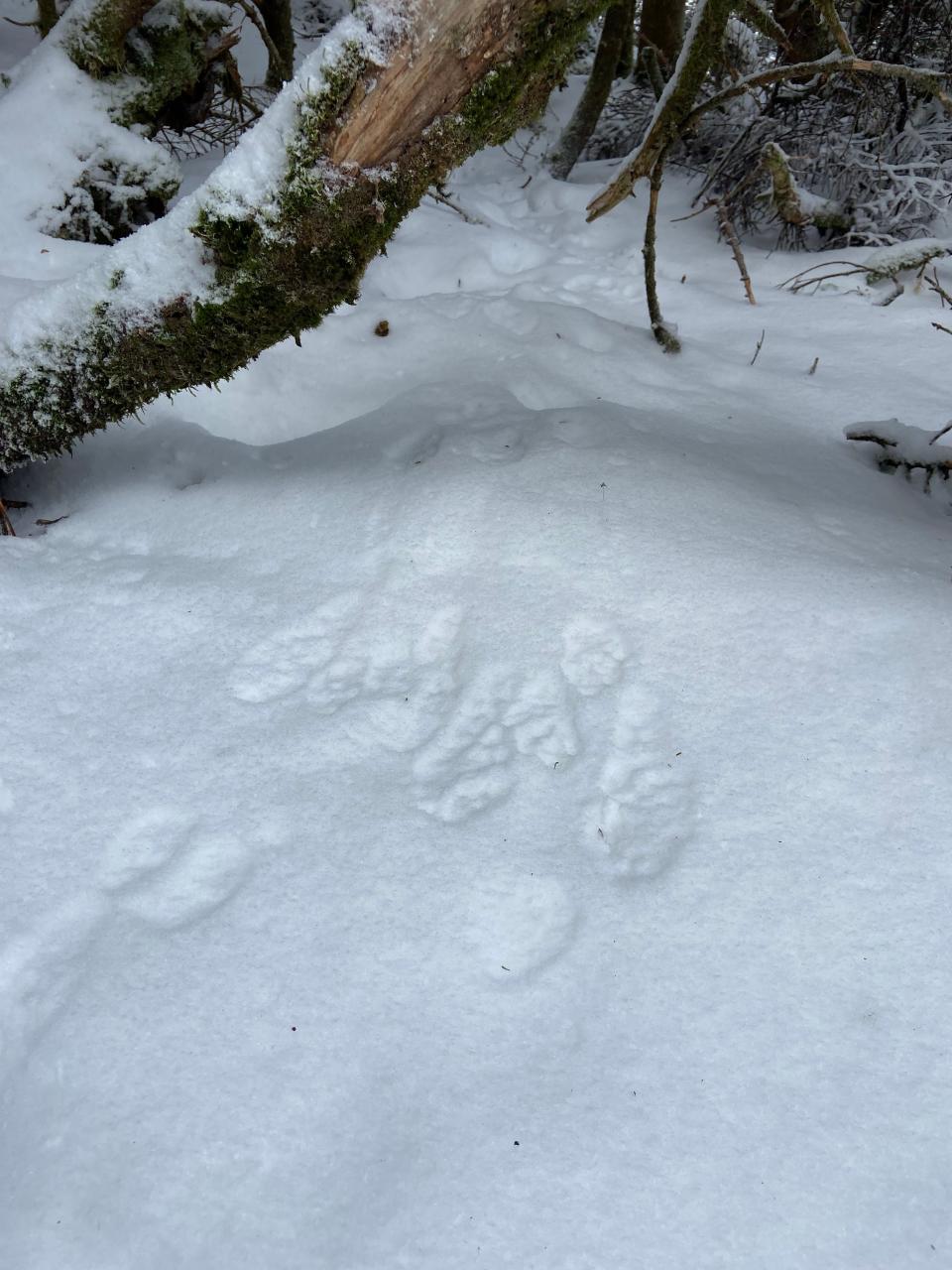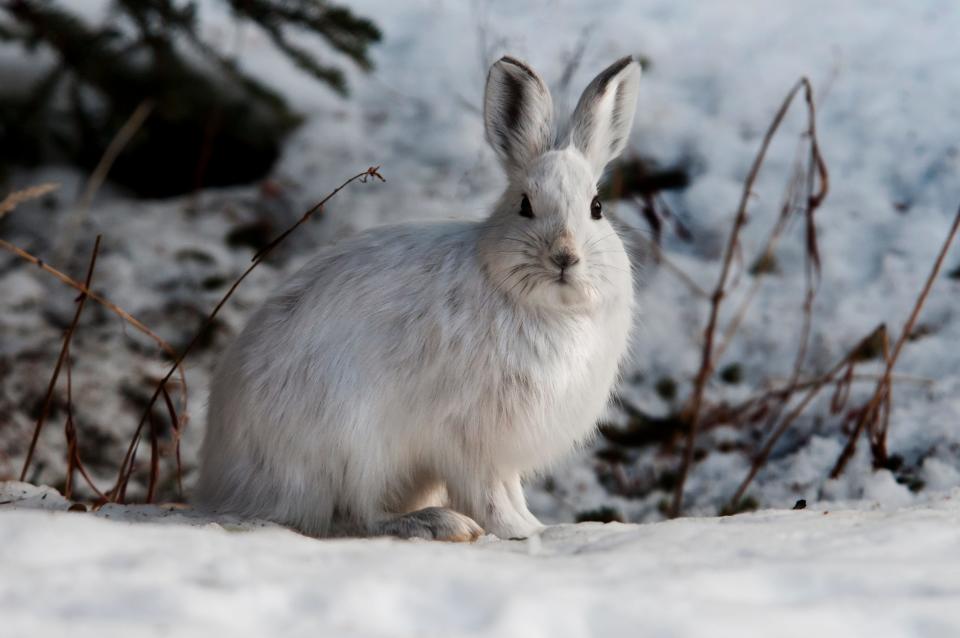Snowshoe hares: The real rock stars of winter for more reasons than one
One of the many things I love about winter is the snow and the ability to track the animals that live in our backyards. It’s such an adventure to be able to go outside and discover who has been hanging out in your yard all night; a fox pacing along the edge of a field, squirrels bounding along the forest floor looking for buried stashes of food, mouse tracks into the barn, the regal steps of a flock of turkeys, and, most recently for me, a snowshoe hare in the thicket along the back edge of a field.
I love the idea of snowshoe hares, to me they are a rock star of cold northern winters. A resident of the vast boreal forests of North America (most common forest mammals in Canada), you will find them throughout New England (with the exception of Massachusetts and Rhode Island) and at the higher elevations of the Appalachians (because higher elevations resemble northern latitudes) as far south as northern Tennessee.

The two most distinguishing characteristics of the snowshoe hare are their large, densely furred hind feet that give snowshoe hares excellent buoyancy in soft, deep snow, and their variable coats that turn white in the winter and reddish-brown in the summer. These huge hind feet make it easy to tell snowshoe hare from rabbit tracks. Hares and rabbits are in the same family, the Leporidae, but have a few key differences. Hares tend to be larger, with longer ears than most rabbits. They don’t burrow like rabbits but live completely above ground. Newborn hares (leverets) are precocial, meaning they are born fully furred, eyes wide open and can hop soon after birth). Baby rabbits (kits or kittens), born in the protection of a burrow are altricial, they are born naked with closed eyes and therefore rely on their mothers for quite some time before they can leave their burrows.
Speaking of babies and reproduction, snowshoe hares, like all bunnies, are breeding machines. While reading about snowshoe hares I kept finding this interesting nugget; females can conceive a second litter before the first litter is born. How do they manage this? It turns out that snowshoe hares, like their rabbit cousins, have twin uteri. Imagine a duplex; the first litter can occupy one while a new litter is conceived in the second. This is a relatively rare event, but one of the most amazing fun facts I’ve heard in a long time.
More Nature News:Shagbark hickory nuts the 'black truffle' of the nut world; squirrels agree
As winter warriors, snowshoe hares have special adaptations to help them survive, as mentioned before, those big snowshoe feet that allow them to bound about on top of the snow and the ability to change fur color to blend in with their surroundings. That white fur insulates better because it has more air and less pigment in it than their summer brown coat. Their ears are also smaller than most hares. Desert hares have huge, long ears containing many veins that help them regulate their body temperature by radiating heat away from the body. Because snowshoe hares live in the north, large ears would be a liability in the winter, smaller ears help retain body heat.

How can we encourage snowshoe hares to flourish in our area? One of the best ways to encourage snowshoe hares to live in your neighborhood is through land management. According to the U.S. Forest Service, the most important thing snowshoe hares look for in habitat are young forests with abundant understories. This is more important to them than food availability. They need thickets to hide from predators.
With climate change, one upcoming issue for snowshoe hares is coat mismatch-with increasingly shorter snow seasons snowshoe hares are often turning white before there is any snow on the ground. How this will affect their population is currently being studied. There is some evidence that snowshoe hares might be able to adapt better than we thought to a rapidly changing climate, but I still worry. With the unseasonable warmth and lack of snow, I feel like if I were a snowshoe hare I would head north.

Susan Pike, a researcher and an environmental sciences and biology teacher at Dover High School, welcomes your ideas for future column topics. Send your photos and observations to spike3116@gmail.com. Read more of her Nature News columns online at Seacoastonline.com and pikes-hikes.com, and follow her on Instagram @pikeshikes.
This article originally appeared on Portsmouth Herald: How snowshoe hares survive the cold New England winters

